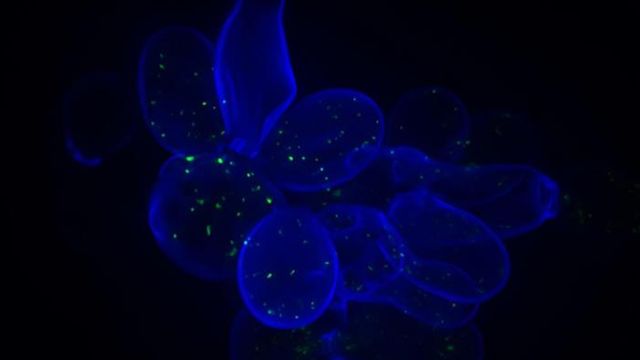
In a groundbreaking study, researchers from Charité – Universitätsmedizin Berlin, in collaboration with Stanford University, have developed a method to predict the effects of genetic mutations in yeast. This discovery, which focuses on the proteome—the complete set of proteins within a cell—could be pivotal in understanding how microorganisms develop resistance to medicinal agents. The findings were recently published in the journal Science.
Microorganisms are known for their remarkable ability to adapt to environmental changes, including developing resistance to drugs. The study, led by Prof. Markus Ralser, Director of the Institute of Biochemistry at Charité, aims to better assess the risk of pathogens becoming resistant and to aid in the development of new therapeutic agents. “Since genome sequencing has advanced so rapidly, we can identify genetic differences very well nowadays. However, we often do not know their impact on a microbe’s growth or resistance, for example, or under which conditions they are significant,” Ralser explains.
Exploring the Molecular Blackbox
To delve into the effects of various gene variants, the researchers turned their attention to the proteome, likened to a gear train that orchestrates cellular processes. Dr. Johannes Hartl of the Berlin Institute of Health at Charité (BIH), one of the study’s lead authors, noted, “For example, a specific variant in a gene can mean that a protein is no longer produced, or is produced in a different form or quantity. And that can actually change quite a lot in the cell’s inner workings.”
The team conducted experiments using two naturally occurring strains of yeast cells—one from a Californian vineyard and the other from an immunosuppressed patient in Italy. By crossbreeding these strains over multiple generations, they created nearly a thousand new yeast strains, each with a unique genetic makeup. The proteome of these strains was then analyzed using advanced techniques like high-throughput screening and mass spectrometry.
Mapping Genetic Variants to Proteome Changes
The researchers sought to establish clear links between gene variants and changes in the proteome. “We compared the genome and proteome data and created a kind of map that shows the effect of thousands of genetic variants on the amount of thousands of proteins in the cell,” Hartl explains. To validate their findings, they employed CRISPR/Cas technology to introduce specific gene variants into the original yeast strains and observed corresponding changes in the proteome.
Further experiments examined the impact of these genetic changes on the yeast cells’ ability to withstand antifungal drugs. “In our genome-to-proteome map, we were able to see that certain gene variants contained raised levels of an enzyme necessary for the yeast membrane,” Hartl says. This increase in enzyme levels made the yeast more resistant to the antifungal agent.
Far-Reaching Implications of Genetic Mutations
The study highlights the significant impact that seemingly minor genetic mutations can have. While some genetic variants appeared inconsequential under standard conditions, they proved critical when environmental conditions changed, such as during drug treatment or nutrient shifts.
“The genome-to-proteome map is an outstanding tool for revealing associations in molecular biology and understanding the impact of mutations and genetic differences,” Ralser emphasizes. This tool enables researchers to predict potential resistance developments and adaptations in microorganisms, which is crucial for tackling pathogens that threaten human health.
Looking ahead, the research team plans to extend their approach to study fungal pathogens responsible for severe human infections. This could pave the way for more effective treatments and preventive measures against drug-resistant microorganisms.
Reference: Jakobson CM, Hartl J, Trébulle P, Mülleder M, Jarosz DF, Ralser M. A genome-to-proteome map reveals how natural variants drive proteome diversity and shape fitness. Science. 2025;390(6769):eadu3198. doi: 10.1126/science.adu3198





